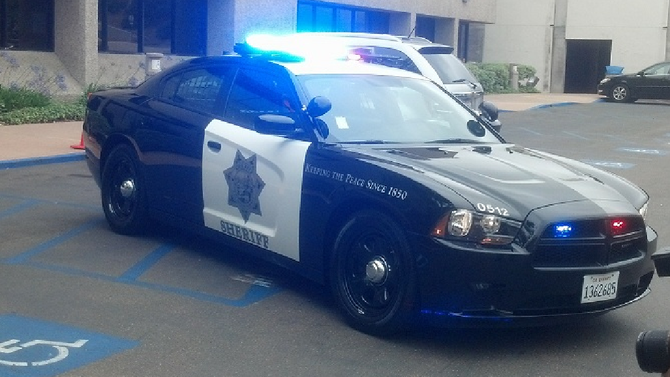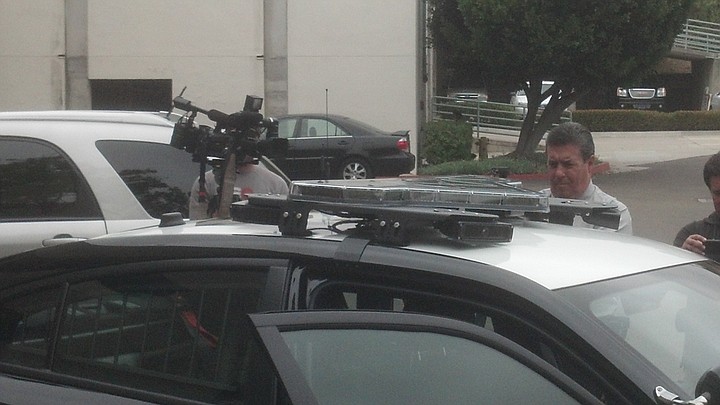 Facebook
Facebook
 X
X
 Instagram
Instagram
 TikTok
TikTok
 Youtube
Youtube

On June 4, the San Diego County Sheriff’s Department unveiled a new “automatic license plate reader car” that will be based out of the department’s Valley Center substation.
“This car has the ability to read several hundred license plates a minute on the move, whether you’re going 80 miles an hour or 8 miles an hour,” said Sgt. Robert Niderost, who wrote the grant request that resulted in the acquisition of funds for the car’s purchase. Four cameras mounted under the light bars on the car’s roof aim to the front and sides of the vehicle, picking up oncoming vehicles as well as those it passes.

Images captured by the cameras are stored up to six months, explained Lt. Michael McClain, head of the Valley Center substation.
Funding for the $78,000 Dodge Charger came from the Barona Band of Mission Indians, Sycuan Band of Kumeyaay Nation, and the Indian Gaming Local Community Benefit Committee.
While the department has several other cars outfitted with the same technology (a department spokesperson declined to disclose how many or where they are operated), the Valley Center cruiser is the first that will operate primarily in rural areas, including near local casinos.
“Our goal is to make our casino patrons as well as tribal members and other community members of the Valley Center and Pauma Valley area safer by providing a more proactive law-enforcement technique,” said Niderost.
The initial purpose of the car will be to identify stolen vehicles or those driven by crime suspects, but that could expand as more patrol vehicles are equipped with the technology.
“For example, with sex offenders, we could use this system to help us identify people who have registered certain vehicles that are not supposed to be near schools,” offered McClain.


On June 4, the San Diego County Sheriff’s Department unveiled a new “automatic license plate reader car” that will be based out of the department’s Valley Center substation.
“This car has the ability to read several hundred license plates a minute on the move, whether you’re going 80 miles an hour or 8 miles an hour,” said Sgt. Robert Niderost, who wrote the grant request that resulted in the acquisition of funds for the car’s purchase. Four cameras mounted under the light bars on the car’s roof aim to the front and sides of the vehicle, picking up oncoming vehicles as well as those it passes.

Images captured by the cameras are stored up to six months, explained Lt. Michael McClain, head of the Valley Center substation.
Funding for the $78,000 Dodge Charger came from the Barona Band of Mission Indians, Sycuan Band of Kumeyaay Nation, and the Indian Gaming Local Community Benefit Committee.
While the department has several other cars outfitted with the same technology (a department spokesperson declined to disclose how many or where they are operated), the Valley Center cruiser is the first that will operate primarily in rural areas, including near local casinos.
“Our goal is to make our casino patrons as well as tribal members and other community members of the Valley Center and Pauma Valley area safer by providing a more proactive law-enforcement technique,” said Niderost.
The initial purpose of the car will be to identify stolen vehicles or those driven by crime suspects, but that could expand as more patrol vehicles are equipped with the technology.
“For example, with sex offenders, we could use this system to help us identify people who have registered certain vehicles that are not supposed to be near schools,” offered McClain.
Comments